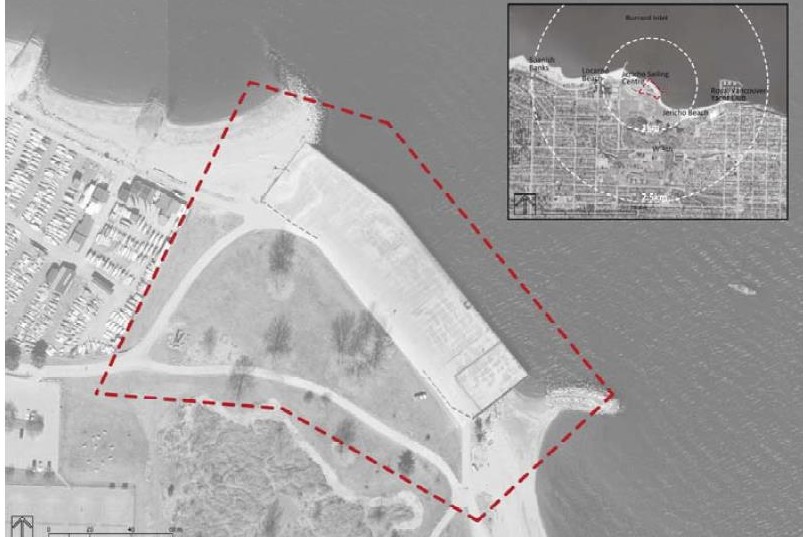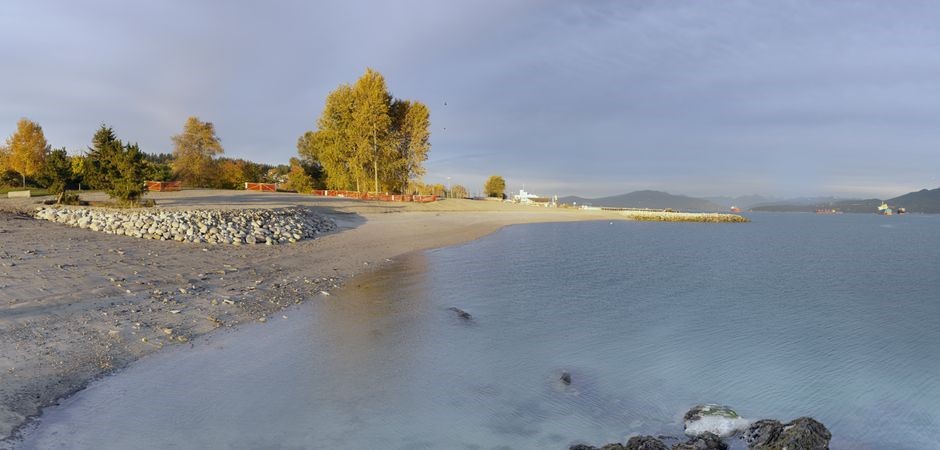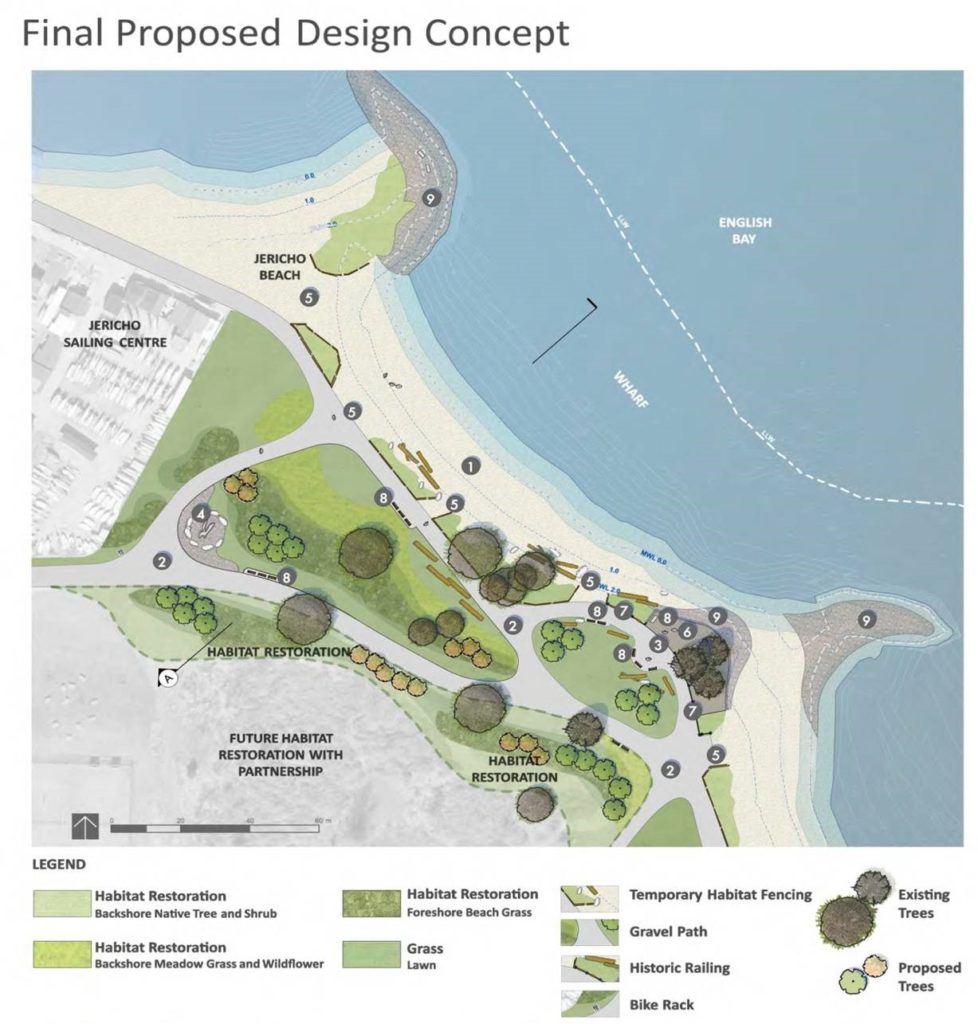Green Shores | Case Studies
Jericho Beach Park, Vancouver, BC
↪ Green Shores for Shoreline Development project


Project Overview
| Location: Jericho Beach, Vancouver, BC | Project area: 1 ha |
| Year completed: 2017 | Awards: City of Vancouver’s 2014 Urban Design Awards in Landscape, Public Space, and Infrastructure. |
| Shoreline length: 175 m | Shore type: Sand and Gravel |
| Green Shores rating achieved: GOLD | Total points: 22 |
Site Description

- Located between two rock groynes, the site has very little sediment input from and transport to adjacent beaches.
- Dense creosote piles, concrete debris and the Jericho Marginal Wharf required removal.
- The habitat for forage fish and migrating salmonids was notably deficient.
Historical Site Use
The Jericho Marginal Wharf was built in the 1930s to serve the needs of the Royal Canadian Air Forces amphibious aircraft operations. Jericho and neighboring La Carno beaches are some of the most popular recreational beaches in the City of Vancouver. The site offers numerous public recreational activities including jogging, sailing, beachcombing, and picnicking.
Design Schematic

Project Team and Affiliated Organizations
- Vancouver Parks Board
- Moffatt & Nichol
- Raincoast Applied Ecology
- Sharp & Diamond Landscape Architecture, Inc.
- Sumas Remediation
- Vancouver Pile Driving
- City of Vancouver
Project Objectives
- Demolish the Jericho Marginal Wharf and pilings to improve sediment supply and public safety,
- Restore the natural beach and foreshore habitat,
- Remove toxic creosote piles and concrete debris from the intertidal zone,
- Enhance spawning substrate for forage fish and provide shade and refuge for migrating salmonids.
- Complete extensive riparian planting
Work Plan
Due to its location within a popular Vancouver park, a rigorous public engagement process with multiple stakeholders was used to build support for wharf removal and shoreline restoration. The site design promoted ecological restoration in an urban waterfront context.
The presence of toxic creosote from the wharf and pilings that supported the structure necessitated extensive sedimentation and pollution control measures in the project’s Environmental Protection Plan. As many piles as possible were removed during low tide to minimize mobilization of toxins and contaminated sediment; small debris was captured with tarps, booms and hand removal; absorbent booms and pads were used to capture hydrocarbons.
Description of how the project meets Green Shores principles
> Maintained/ Enhanced Habitat Function and Diversity
- Enhancement of foreshore habitats and beach elevations through beach nourishment.
- Habitat restoration plan including substrate enhancement for forage fish spawning, vegetation planting, and construction methodology (habitat restoration applies to greater than 25% of the site).
- Extensive planting plan designed by a registered professional biologist with extensive experience in coastal riparian systems. The planting plan was applied along 30 meters of the project site and included the conservation of healthy riparian areas and extensive new plantings.
- Concrete debris removed from intertidal to uncover beach substrate and habitat.
> Preserved/Restored Shoreline Physical Processes
- Removal of pre-existing wharf with bulkhead and fill landward of wharf.
- Some rock was used to stabilize the soft shore protection, so the site is not entirely free of armour.
- Removal of piles may restore the natural wave regime at the site; it was not determined if the groynes could be breached during storms to resume (eastward) sediment transport from the site.
- Multi-year monitoring plan was submitted to assess the functionality of the restored habitats.
- Potentially restored sediment transport rates from removal of dense creosote piles.
> Ecological Services Provided
- Creation of additional intertidal and riparian habitat with an additional 150 meters of shore length
- Bulkhead removed to restore marsh habitat
- Restored buried surf smelt and sand lance spawning habitat and enhanced adjacent habitats.
- Marine riparian vegetation enhancement provided additional shade and refuge for migrating juvenile salmonids and other smaller fish, water pollution abatement
- Increased resilience to sea level rise.
> Additional Notes
- Project scored well for Restoration/Enhancement of Shoreline Habitats (Credit 5) and for Climate Change Adaptation (Credit 8) as structures were moved landward of the projected future location of the natural boundary, soft shore protection was used to mitigate erosion, and marine riparian buffers were sited at higher beach elevations.


